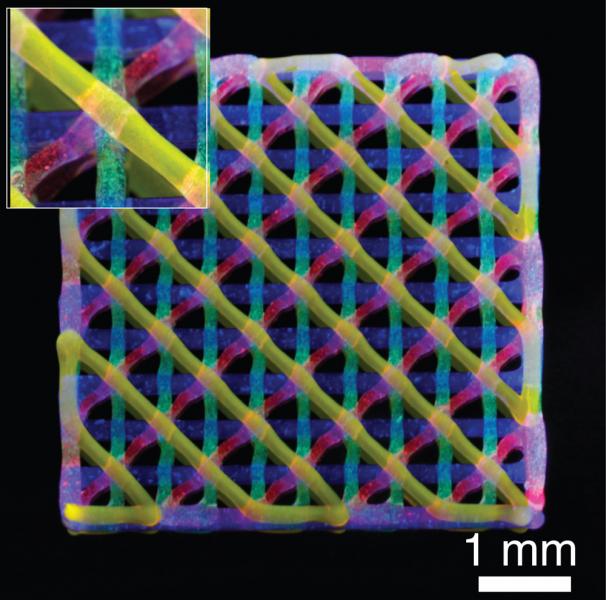SOPHISTICATED TECHNIQUE PIONEERED BY JENNIFER A. LEWIS AMONG DEVELOPMENTS HIGHLIGHTED BY TECHNOLOGY REVIEW
The magazine Technology Review today announced its annual list of 10 Breakthrough Technologies that "mark true milestones" and "solve thorny problems or create powerful new ways of using technology."
Gracing the list is a sophisticated microscale 3D printing technique developed byJennifer A. Lewis, Hansjorg Wyss Professor of Biologically Inspired Engineering at the Harvard School of Engineering and Applied Sciences. Lewis is also a core faculty member at the Wyss Institute for Biologically Inspired Engineering at Harvard University.
“Every year we pick the 10 technologies we think most likely to change the world," said Jason Pontin, publisher and editor-in-chief of Technology Review, in a press release. "We are interested in how technologies can solve really hard problems, whose solution will expand human possibilities. These technologies are an expression of our preferences and emphases, and they grow out of our reporting over the previous year. This is the stuff we like.”
The following is an excerpt from the magazine, which can be read in its entirety at technologyreview.com.

Multimaterial 3D printing can be achieved using several independently addressable printheads. (Fluorescence image courtesy of Jennifer A. Lewis.)
A group at Princeton University has printed a bionic ear, combining biological tissue and electronics... while a team of researchers at the University of Cambridge has printed retinal cells to form complex eye tissue. But even among these impressive efforts to extend the possibilities of 3-D printing, Lewis’s lab stands out for the range of materials and types of objects it can print.
Last year, Lewis and her students showed they could print the microscopic electrodes and other components needed for tiny lithium-ion batteries.... Other projects include printed sensors fabricated on plastic patches that athletes could one day wear to detect concussions and measure violent impacts. Most recently, her group printed biological tissue interwoven with a complex network of blood vessels. To do this, the researchers had to make inks out of various types of cells and the materials that form the matrix supporting them. The work addresses one of the lingering challenges in creating artificial organs for drug testing or, someday, for use as replacement parts: how to create a vascular system to keep the cells alive.
The above story is based on materials by Harvard School of Engineering and Applied Sciences
Note: Materials may be edited for content and length. For further information, please contact the source cited above
Copyright © 2024 International Society of Bionic Engineering All Rights Reserved
吉ICP备11002416号-1



 Attachment:
Attachment:






